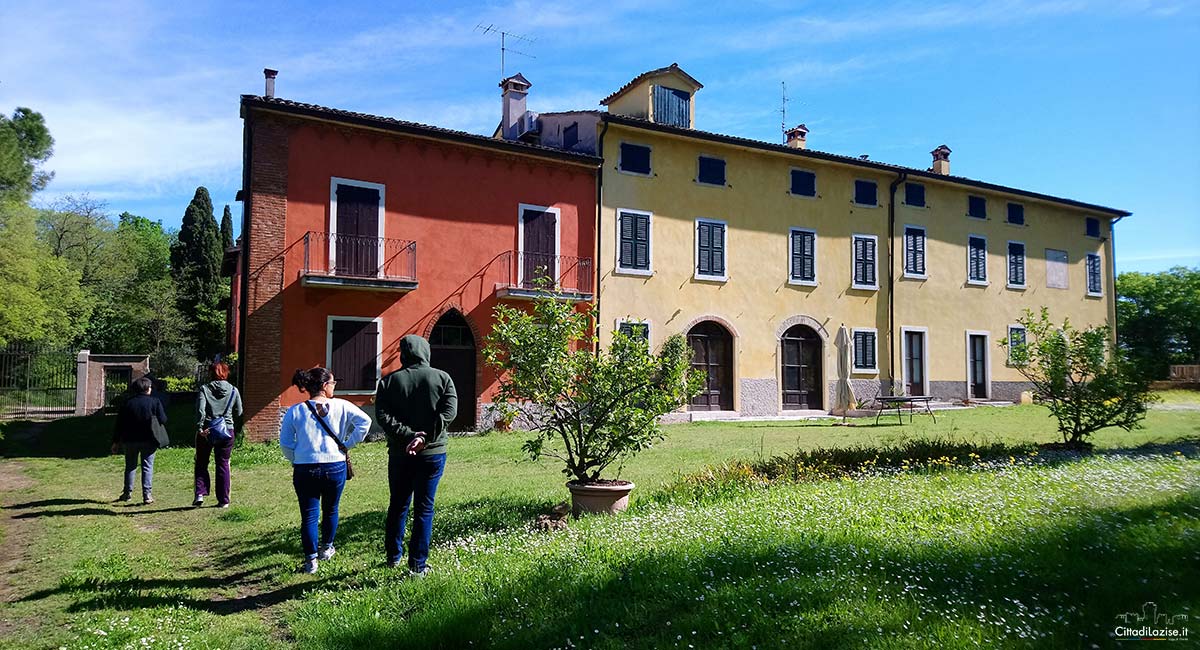Coming from Pacengo along Via Belvedere, a row of centuries-old cypresses anticipates the arrival at the splendid Palù della Pesenata in Colà di Lazise, almost entirely occupied by the property of the large Benciolini family.
The name of the locality derives from the presence of a marshy area, the “palù”, still visible today, and from the previous owner of the villa, the countess Elisabetta Pesenati Falconi, whom a document dated 1778 connects to this estate.
The façade is outlined as a juxtaposition of three buildings, each of which identifies its own axis of symmetry and a rigorous order in the arrangement of the windows and arched entrance portals. The stately part certainly occupied the central and eastern portion, currently ocher in color with round arched portals and geometric patterned cobblestone entrance thresholds. Above the most lateral portal, characterized by a keystone in relief, a sundial is frescoed. The western part, plastered in a purple red color, was in ancient times the stable whose access is characterized by a pointed arch portal.
A magnificent and centuries-old specimen of cedar from Lebanon dominates the garden area in front of the facade of the villa. Of particular value is the long avenue called "dei pigni", slightly uphill and flanked on both sides by centuries-old cypress trees with an emerald green trunk that lead towards a belvedere terrace with a particular bastion configuration.
During the First World War the Austrians had given orders to tear down this row as it misled the aeronautical movements; fate wanted instead to save this enchanting place that evokes poetry and romance. The panoramic view opens towards Pacengo and Lake Garda. A capital with a sacred image stands at the beginning of this avenue and anticipates the beginning of a grove of oaks, hornbeams, ash trees and hackberry trees that reaches the boundaries of the property.
Municipality: Lazise
Hamlet: Colà
Location: Palù della Pesenata
Via Palù della Pesenata, 2
Period: late 18th century




